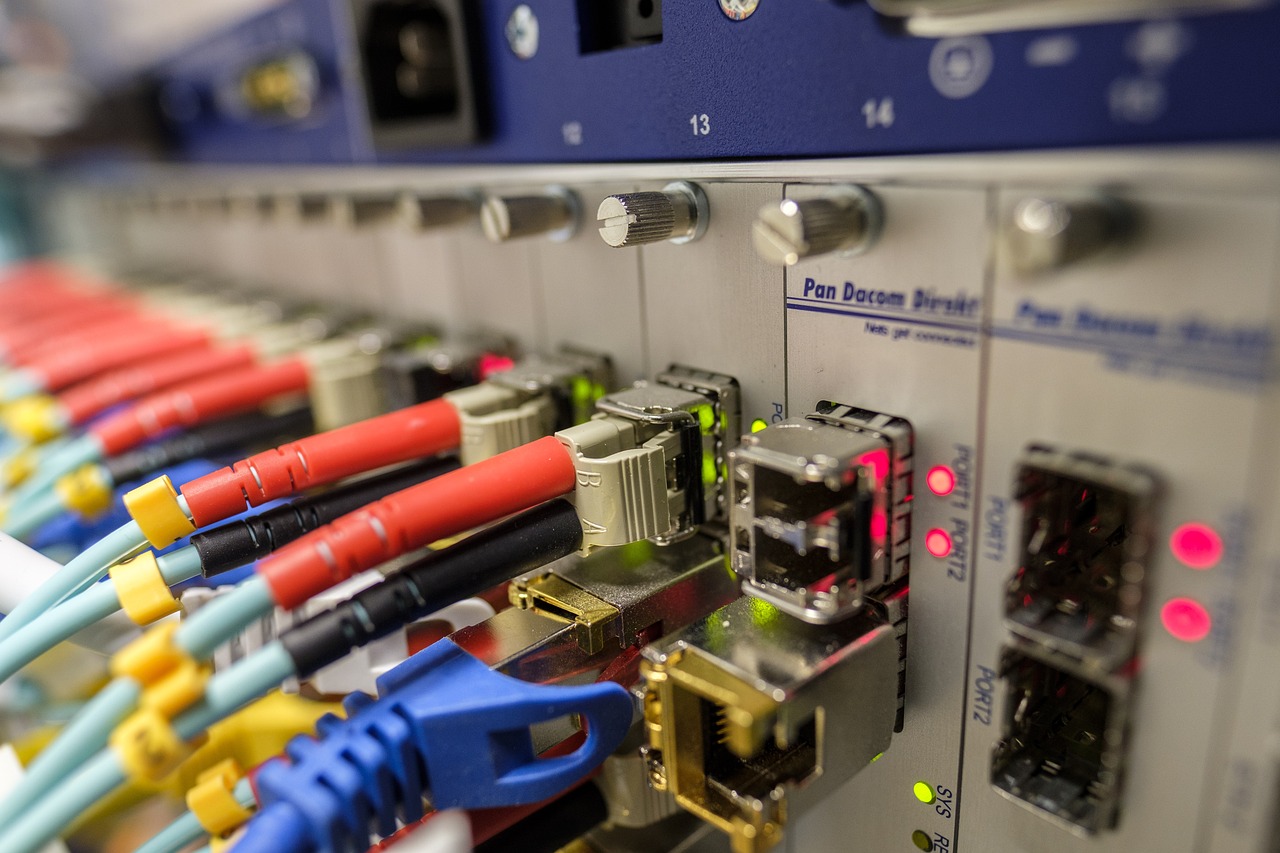Understanding Loose Tube vs. Tight-Buffered Fiber Optic Cables

Fiber optical fiber cables revolutionize modern communication networks, transmitting data at lightning speeds across vast distances. Selecting the optimal cable type is crucial to ensure seamless connectivity. In this blog, the focus is on comparing two fundamental variants: Loose tube and Tight-Buffered Fiber Optic Cables. Understanding their unique characteristics is essential for making informed decisions in network infrastructure development.
Characteristics of Loose Tube Fiber Optic Cables
Construction
When considering Loose tube fiber optic cables, it's essential to understand their construction intricacies.
Structure and materials used
Loose tube cables are designed with protective sleeves or tubes that enclose the fiber core, cladding, and coating.
These cables often have a water-resistant gel surrounding the fibers, safeguarding them from moisture and high-humidity environments.
Gel or water-blocking materials
The inclusion of gel within the loose-tube construction prevents water penetration, ensuring the fibers remain dry and undamaged.
This gel-filled design is particularly beneficial for outdoor applications where exposure to varying weather conditions is inevitable.
Performance
The performance of Loose tube fiber optic cables sets them apart in various scenarios.
Temperature tolerance
Loose tube cables exhibit remarkable temperature tolerance, withstanding fluctuations without transmitting stress to the fibers.
The ability of these cables to expand and contract with temperature changes ensures durability in extreme environmental conditions.
Flexibility and durability
The semi-rigid protective sleeves allow the enclosed fibers to move freely within the cable structure, enhancing flexibility.
This flexibility contributes to the overall durability of loose tube cables, making them ideal for long-distance communication networks.
Applications
Understanding the diverse applications of Loose tube fiber optic cables is crucial for selecting the right cable type for specific needs.
Outdoor installations
Loose tube cables excel in outdoor installations due to their robust construction that protects against environmental factors.
These cables are commonly used in aerial setups, duct systems, CATV networks, and long-distance communication infrastructures.
Long-distance communication
The durability and reliability of loose tube fiber optic cables make them a preferred choice for long-distance communication links.
Their ability to withstand harsh outdoor conditions while maintaining signal integrity over extended distances is unmatched.
Characteristics of Tight-Buffered Fiber Optic Cables
Construction
Structure and materials used
Tight-buffered fiber optic cables are specifically designed for indoor applications, offering enhanced sturdiness compared to loose-tube cables.
These cables feature a unique construction with a two-layer coating consisting of plastic and waterproof acrylate to protect the delicate fiber core.
Buffer coating
The buffer coating in tight-buffered cables provides an additional layer of protection, ensuring the fiber core remains intact even under bending or compression.
This specialized coating prevents moisture ingress into the cable, making it ideal for underwater applications and scenarios with multiple bends.
Performance
Temperature tolerance
Tight-buffered fiber optic cables exhibit superior temperature tolerance, maintaining optimal performance in varying environmental conditions.
The innovative design of these cables allows them to withstand temperature fluctuations without compromising signal integrity.
Flexibility and durability
The flexibility of tight-buffered cables enables easy installation and maneuverability in confined indoor spaces.
Their durable structure ensures long-lasting performance, making them suitable for high-performance fiber optic applications.
Applications
Indoor installations
Tight-buffered cables are best suited for moderate-length LAN/WAN connections and long indoor runs due to their robust design.
These cables provide fast, easy, and economical termination options without the need for complex cleaning processes.
Short-distance communication
Tight-buffered fiber optic cables are ideal for short-distance communication links within controlled environments.
Their direct connectability and design versatility make them a preferred choice for various networking setups.
Comparative Analysis
Construction Differences
Loose Tube vs. Tight-Buffered structure
Loose tube cables are tailored for rugged outdoor environments, allowing fibers to move freely within protective sleeves.
Tight-buffered cables, in contrast, boast a sturdier design with a coating of plastic and waterproof acrylate, making them ideal for underwater applications.
Material differences
Loose tube cables prioritize durability in harsh conditions, safeguarding fiber cores within protective sleeves.
Tight-buffered cables, optimized for indoor use, feature a robust two-layer coating of plastic and waterproof acrylate for enhanced protection.
Installation Considerations
Ease of installation
When it comes to installation, tight-buffered cables offer simplicity and convenience without the need for messy gel applications.
In comparison, loose tube cables require meticulous handling due to their design tailored for challenging outdoor settings.
Environmental factors
Tight-buffered cables excel in indoor setups like LAN/WAN connections and direct burial installations.
On the other hand, loose tube cables are specifically engineered for long-distance outdoor applications where environmental resilience is paramount.
Performance Comparison
Durability in different conditions
The sturdiness of tight-buffered cables makes them well-suited for indoor use, ensuring longevity even in confined spaces.
Conversely, the robust construction of loose tube cables caters to extreme outdoor conditions, providing durability over long distances.
Signal integrity and loss
For signal integrity maintenance, tight-buffered cables offer reliability in short-distance communication setups within controlled environments.
Meanwhile, loose tube cables' design prioritizes signal integrity over extended distances in challenging outdoor scenarios.
Termination Methods
Loose Tube Termination
Tools and techniques
Fiber Cleaver: Used to precisely cut the fiber ends before termination.
Fusion Splicer: Utilized to fuse optical fibers together for a seamless connection.
Connector Polishing Kit: Essential for polishing connector ends to reduce signal loss.
Heat Shrink Tubing: Applied to secure and protect spliced fibers from environmental factors.
Common challenges
Fiber Alignment: Ensuring accurate alignment of fibers is crucial for successful terminations.
Moisture Contamination: Preventing moisture ingress during termination is vital to maintain signal integrity.
Cable Strain Relief: Proper strain relief techniques must be employed to avoid damage to terminated fibers.
Connector Inspection: Thorough inspection of connectors post-termination is necessary to identify any defects.
Tight-Buffered Termination
Tools and techniques
Adhesive Epoxy: Used to secure connectors onto tight-buffered fiber ends.
Polishing Film: Essential for achieving smooth connector surfaces post-termination.
Crimp Tool: Employed for crimping connectors onto tight-buffered fiber cables securely.
Common challenges
Epoxy Curing Time: Ensuring adequate curing time for epoxy is essential for reliable terminations.
Connector Polishing Precision: Achieving precise connector polishing is critical to minimize signal loss.
Crimp Consistency: Maintaining consistent crimping pressure across connectors is key for optimal performance.
Environmental Factors: Protecting terminated connections from environmental elements like dust and humidity is imperative.
Connector Options
Types of Connectors
SC, LC, ST, and others
Fiber optic networks rely on a variety of connectors to ensure seamless connectivity. Among the most commonly used connectors are SC, LC, and ST connectors, each with unique features catering to specific network requirements.
SC Connectors:
Known for their push-pull coupling mechanism, SC connectors provide quick and reliable connections.
These connectors are widely used in data centers and telecommunication networks due to their ease of use and robust design.
LC Connectors:
Featuring a small form factor, LC connectors offer high density in patch panels and equipment ports.
Their popularity in modern networks stems from their space-saving design and compatibility with various fiber types.
ST Connectors:
Recognizable by their bayonet-style coupling mechanism, ST connectors provide secure connections.
Commonly found in older network installations, ST connectors offer simplicity and durability in diverse networking environments.
Compatibility with Loose Tube and Tight-Buffered Cables
Connector selection criteria
Selecting the appropriate connector for fiber optic cables involves considering compatibility with both loose tube and tight-buffered cables. The choice depends on factors such as installation environment, application requirements, and network specifications.
When opting for connectors for loose tube cables, it is essential to prioritize ruggedness and environmental resilience.
For tight-buffered cables, focus on connector designs that complement indoor installations while ensuring signal integrity over short distances.
In summary, understanding the distinct characteristics of SC, LC, ST, and other connector types allows network engineers to make informed decisions based on specific network demands.
In conclusion, the comparison between Loose Tube and Tight-Buffered Fiber Optic Cables reveals distinct advantages based on specific needs. Selecting the right cable is crucial for seamless connectivity and network performance. As highlighted by Andrew, choosing the optimal fiber optic cable can significantly impact overall system efficiency. Unknown emphasized the importance of selecting quality cables like LCElite UltraLow Loss fiber patch cables for enhanced performance. User experiences with various fiber optic cables underscore the significance of tailored selections to meet unique requirements. The expertise provided by professionals like Larry Donalds and Rick Tuminelli further emphasizes the value of informed decisions in network infrastructure development.
See Also
Contrasts in Single-Mode vs. Multimode Fiber Optic Cables
Mastery of Fiber Optic Communication: Nylon Cable for FTTR
Comprehending 72 Fibers and Rack Mount in Fiber Optic Patch Panel Setup
Key Contrasts: LC vs. Duplex LC Connectors in Fiber Optic Comms
Insight into Loose Tube, Gel-Free, All-Dielectric Cable with FastAccess


